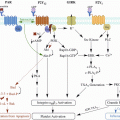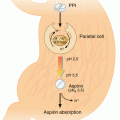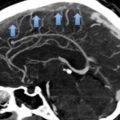Over 60 years age |
Critical care admission |
Dehydration |
Known thrombophilias |
Obesity (body mass index [BMI] over 30 kg/m2) |
One or more significant medical comorbidities (for example: heart disease; metabolic, endocrine or respiratory pathologies; acute infectious diseases; renal failure inflammatory conditions) |
Personal history or first-degree relative with a history of VTE |
Use of hormone replacement therapy |
Use of oestrogen-containing contraceptive therapy |
Varicose veins with phlebitis |
Active cancer or undergoing treatment for cancer |
undergoing a surgical procedure with a total anaesthetic and surgical time of more than 90 min (or 60 min if the surgery involves the pelvis or lower limb)
admitted acutely with inflammatory or intra-abdominal condition
expected significant reduction in mobility
More rapid mobilisation and improved perioperative care has reduced the risk of VTE events, but with over 9.5 million hospital admissions for surgical procedures taking place in the UK per annum, thromboprophylaxis methods in place need to be logistically acceptable and clinically effective (NICE Medical Technology Guidance (MTG19) (2014)). Patients admitted for surgery must be assessed for risk of VTE and this evaluation repeated regularly during the hospital stay as the condition of the patient changes. Currently there is no consensus on which thromboprophylaxis regimes should be used in particular patients and inconsistent use of prophylactic measures for VTE has been widely reported (Rashid et al. 2005). Thromboprophylaxis strategies for hospitalised patients includes pharmacological (such as unfractioned and low-molecular weight heparins, dabigatran, rivaroxaban, aspirin or warfarin), and mechanical (graduated compression stockings, intermittent pneumatic compression devices, venous foot pumps and electrical stimulation devices). Although mechanical devices have proven to be effective at reducing the risk of DVT against no intervention, in clinical settings they are often used in adjunction with pharmacological prophylaxis (Dennis et al. 2009; Howard et al. 2004). This chapter attempts to review the evidence for the use of both pharmacological and mechanical methods of VTE prophylaxis in surgical patients.
2 Pharmacological Thromboprophylaxis
Pharmacological agents form the staple method of thromboprophylaxis in high-risk surgical and medical patients. However they carry with them the risk of bleeding. Often major bleeding events are recorded in clinical trials, but some low volume bleeds can also result in major complication such as intracranial or intervertebral canal bleeding which can lead to death or permanent neurological damage. Risk factors for bleeding are shown in Table 2. The National Institute Care Excellence (NICE) formulates evidence-based recommendations on the prevention and management of a wide range of health conditions. NICE recommends the use of either: fondaparinux, low-molecular weight heparin (LMWH) or unfractioned heparin (for patients with renal failure) as the agent of choice for pharmacological prophylaxis. Treatment should be started as soon as possible after risk assessment has been completed and continued until the patient is no longer at increased risk of VTE.
Table 2
Risk factors for bleeding
Active bleeding |
Acquired bleeding disorders (such as acute liver failure) |
Concurrent use of anticoagulants known to increase the risk of bleeding (such as warfarin with international normalized ratio [INR] higher than 2) |
Lumbar puncture/epidural/spinal anaesthesia expected within the next 12 h |
Lumbar puncture/epidural/spinal anaesthesia within the previous 4 h |
Acute stroke |
Thrombocytopenia (platelets less than 75 × 109/l) |
Uncontrolled hypertension (230/120 mmHg or higher) |
Untreated inherited bleeding disorders (such as haemophilia and von Willebrand’s disease) |
3 Low-Molecular Weight Heparin (LMWH)
Low-molecular weight heparins (LMWH) such as enoxaparin, dalteparin and tinzaparin have been the staple prophylaxis agents in hospitalised patients over the last decade. They have been shown to be effective and safe but in high risk surgery (lower limb orthopaedic and pelvic cancer surgery) there is still a significant risk of VTE.
Compared with no prophylaxis, LMWH has been shown to reduce the risk of VTE in surgical patients by 60 % (Agnelli 2004). The introduction of pharmacological prophylaxis was primarily on the basis of their ability to reduce the incidence of DVT detected using venography in clinical trials. The clinical relevance was highlighted in a meta-analysis which demonstrated that compared with placebo or no treatment, LMWH significantly reduced clinical PE (n = 5456, RR 0.25 (0.08–0.79) and clinical VTE (n = 4890, RR 0.29 (0.11–0.73) and trended towards a reduction in overall mortality rate. LMWH was favoured over low-dose unfractionated heparin as it was shown to be safer and just as effective (Mismetti et al. 2001).
4 Fondaparinux
Fondaparinux is a factor Xa inhibitor and like LMWH, it is administered once-daily subcutaneously. Fondaparinux has a half-life of 17–21 h and is eliminated by the kidneys contraindicating it in patients with a creatinine clearance less than 30 ml/min. Although there is no specific antidote to fondaparinux, in an emergency scenario recombinant factor VIIa can be used. Several large-scale phase III clinical trials have evaluated fondaparinux in major orthopaedic surgery. Meta-analysis has shown that fondaparinux significantly reduced the incidence of VTE experienced in 182 of 2682 patients (6.8 %) compared with enoxaparin-treated incidence of 371 of 2703 (13.7 %) patients) (Turpie et al. 2002). This beneficial effect was consistent across all types of surgery.
Although there were 2.7 % adjudicated major bleeding episodes in the fondaparinux-treated group compared with 1.7 % in the enoxaparin-treated group (p = 0.008), the incidence of clinically relevant bleeding (leading to death or reoperation or occurring in a critical organ) did not differ between groups (Turpie et al. 2002). In patients undergoing abdominal surgery, fondaparinux was found to be non-inferior to dalteparin, with VTE occurring in 47 of 1027 (4.6 %) patients treated with Fondaparinux compared with 62 of 1021 (6.1 %) patients treated with dalteparin (p = 0.144). The sub-group operated on for cancer had a significantly lower frequency of VTE when treated with fondaparinux (4.7 % compared with 7.7 %) (Agnelli et al. 2005).
5 Low Dose Un-Fractioned Heparin (UFH)
In a meta-analysis of randomised control trials, UFH was shown to significantly reduce the frequency of DVT compared with no prophylaxis or placebo. The use of UFH was however associated with an increased frequency of bleeding events (from 3.9 to 5.9 %) (Collins et al. 1988). Comparing efficacy with LMWH, at least nine meta-analyses and systematic reviews have compared the two regimes in surgical patients which taken together indicate that the two regimens are similar for efficacy and safer for the prevention of VTE. LMWH is more popular due to the ease of administration (Geerts et al. 2001).
6 Dabigatran
Dabigatran etexilate is a direct inhibitor of the enzyme factor IIa (thrombin). Also excreted primarily by the kidneys, dabigatran half-life is around 14–17 h. NICE recommend dabigatran for the primary prevention of VTE in adult patients who have undergone elective total hip or knee replacement surgery (NICE Technology Appraisal Guidance 157 (2008)).
Dabigatran had been investigated in three phase III clinical trials for the prevention of VTE comparing 220 mg daily dosing with enoxaparin; RE-NOVATE, RE-MODEL and the RE-MOBILIZE trial. Pooled together, no significant differences were detected between dibigatran and enoxaparin in any of the end-points analysed when all three trials were combined. Meta-analysis of the RE-MODEL and RE-NOVATE supported the conclusions of the individual trials that dabigatran is non-inferior to enoxaparin 40 mg. Major bleeding event frequency was similar in both Dabigatran and Enoxaparin groups (1.4 % respectively) (Wolowacz et al. 2009; Friedman et al. 2010).
7 Rivaroxaban
Rivaroxaban is an oral direct factor Xa inhibitor, which has also been recommended as an option for the prevention of VTE in adults having elective total hip and knee replacement surgery. Four phase III clinical trials (the RECORD program) have evaluated rivaroxaban in orthopaedic surgery compared with enoxaparin. RECORD 1 showed that rivaroxaban reduced the frequency of end-point DVT, PE or death but did not reduce the frequency of symptomatic VTE (0.3 % versus 0.5 %) (Lassen et al. 2008). RECORD 2 later showed that both total and symptomatic VTE was significantly lower in patients treated with 35 days of rivaroxaban compared with enoxaparin given for 12 days (Friedman et al. 2010). RECORD 3 and 4 demonstrated no significant difference was seen in non-major bleeding episodes with 81 of 1228 (6.6 %) patients treated with rivaroxaban having on-treatment bleeding compared with 68 of 1229 (5.5 %) patients treated with enoxaparin (p = 0.25) (Lassen et al. 2008; Turpie et al. 2009).
8 Apixaban
Abixaban is also an oral direct selective factor Xa inhibitor, thereby diminishing the conversion of prothrombin to thrombin. It has a half-life of 9–14 h and is primarily secreted via the gastrointestinal system. The ADVANCE 1 and 2 trials showed that apixaban was non-inferior to enoxaparin 30 mg given twice daily, but superior to enoxaparin 40 mg given once daily (Lassen et al. 2009, 2010a). On-treatment bleeding episodes were significantly lower in patients treated by apixaban. Meta-analysis of the ADVANCE 2 and 3 trials have shown apixaban to be superior to enoxaparin with similar safety profiles (Lassen et al. 2010b; Raskob et al. 2012).
9 Mechanical Thromboprophylaxis
Mechanical compression methods lower the risk of DVT by reducing venous stasis, increasing venous blood velocity, decreasing vein diameter and controlling oedema (Sajid et al. 2006). A recent systematic review determined that mechanical compression reduced the risk of DVT in surgical patients by about two-thirds when used on its own, and by half when added to a pharmacological method. This systematic review also determined that these reductions in VTE risk were similar irrespective of the particular method used (graduated compression stockings or intermittent pneumatic pumps) and were similar in each surgical group studied (Roderick et al. 2005). It is important to note that mechanical devices are the cornerstone of VTE prophylaxis in patients with contraindications to pharmacological agents.
Stay updated, free articles. Join our Telegram channel

Full access? Get Clinical Tree







